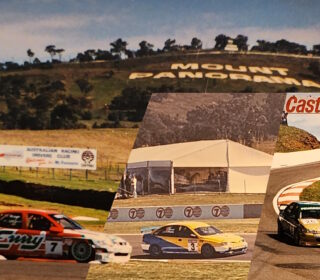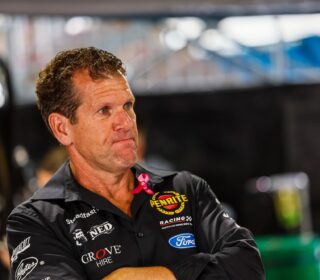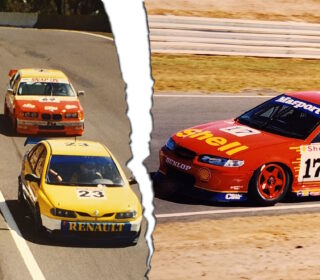The Battle for the Future of Catalina Park

The future of formally regcognising Catalina Park’s motorsport heritage is currently under the spotlight, with The Gully Aboriginal Place – Draft Plan of Management undergoing public exhibition and feedback.
Located in the heart of the Blue Mountains township of Katoomba, the wild seven turn, 2.1km ribbon of bitumen opened in 1961 hosting many of Australia’s top racers through to 1970, when its final race meet was contested.
Ultimately circuits closer to Sydney such as Oran Park and Amaroo Park would steal the limelight, with Catalina Park hosting rallycross in the 1970s and club sprint events through to 2000.
However, the site holds a complicated history beyond the competition spectre, with its importance to the local Aboriginal Community recognised in 2002, when the area known as The Gully was named as an Aboriginal Place, the largest example in New South Wales.
Prior to the crossing of the Blue Mountains by European settlers in 1813, the Gundungurra and Darug peoples utilised the area, before multiple families built their permanent homes in the valley.
In the early days of colonisation, the area was divided up into various land tenure parcels, with the Gully used for mining activities, such as a tramway for the nearby coal and shale extraction efforts, although the Aboriginal presence during this time was accepted without major interference.
The subject area of the plan first came to prominence in 1946, when it was developed as a tourist park, with the creek running through the site dammed, forming a lake on which the husk of a Catalina flying boat would reside.
Featuring amusements such as boat rides, a miniature train, a ferris wheel, a small cinema and a merry-go-round, the attractions become dilapidated by 1952, with the council acquiring the land.
Between 1957 and 1959, the local residents of The Gully, who were amongst some of the town’s poorest citizens, indigenous and non-indigenous, were forcibly removed from their homes to pave the way for the race track, an act which echoes within that community to this day.
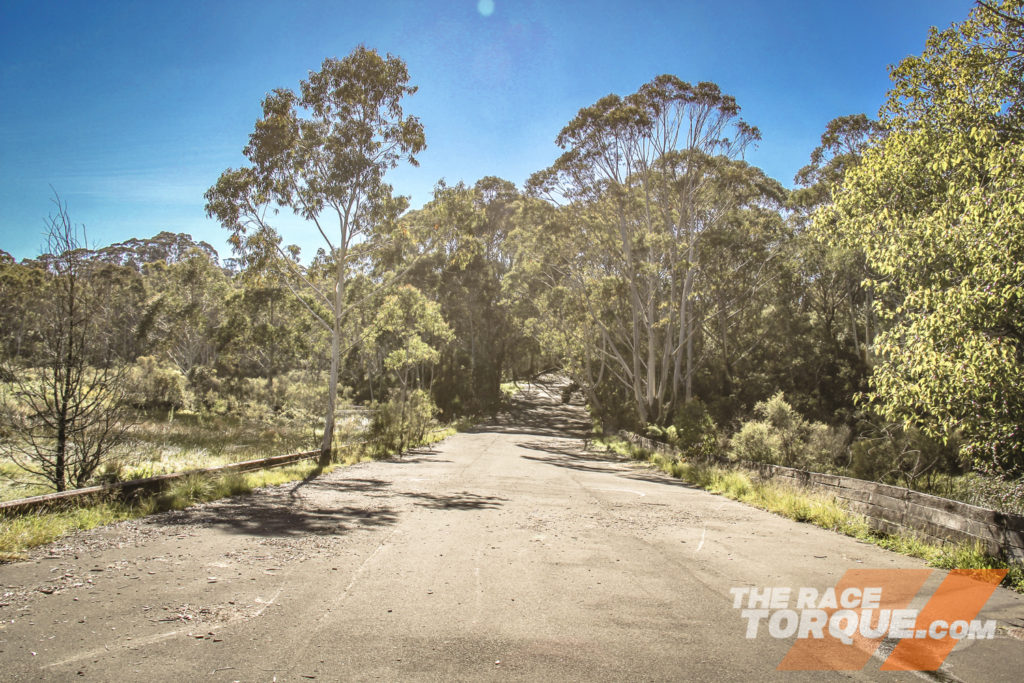
Catalina Park Raceway
In 1953, the local car club first floated the idea of constructing a race track in the locale, with the Blue Mountains Council accepting the proposal in ’57.
With the use of Council equipment, car club members carved the track around the valley, with additional human resources to get the job completed coming from the ARDC, after Mount Druitt circuit on the Sydney-side of the Blue Mountains closed in 1958.
Finally, the venue debuted in 1961, lined with Armco, rock walls and ever-present wooden fences, the circuit placed an emphasis on bravery.
Motorcycles, somehow, also raced at the circuit, which by today’s standards had less runoff than a street circuit.
In the end, Catalina Park’s last event was held in 1970, completing a short tenancy for a permanent circuit.
Numerous complicated factors were cited for the closure, including the commute from Sydney for spectators, the ever-present chance of fog, and also the ARDC moving into its new home at Amaroo Park.
Catalina Park received a reprieve in the 1970s with the made for TV rallycross circus rolling into town, utilising a modified circuit with a dirt link constructed through the infield, with the last event held in 1980.
Vintage regularities ran through the mid-1990s, with the final lap dash sprint held in December 2000, with the venue celebrating its 40th anniversary in early 2001.
From there, the circuit has been slowly reclaimed by the elements, with walkers and cyclists continuing to utilise the path left by the circuit for exercise and recreational purposes.
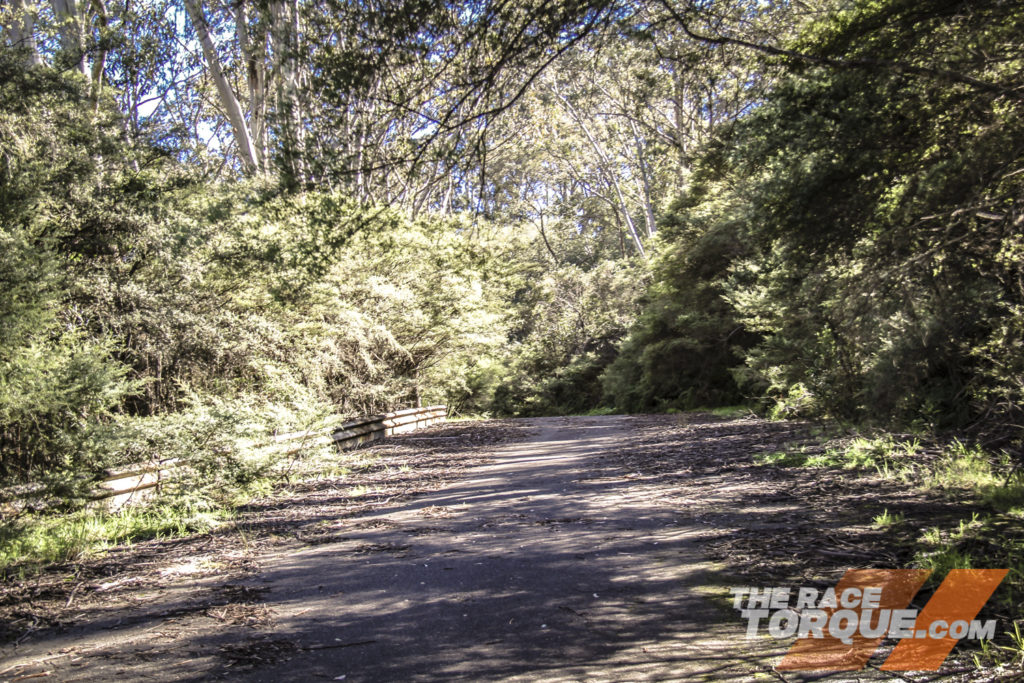
The Gully Aboriginal Place – Plan of Management
The Gully Aboriginal Place – Draft Plan of Management originated in 2004 and is an evolving document that continues to be revised.
It outlines details of the area, its cultural significance, principles of management, its history as an Aboriginal Place, working with the various pieces of legislation controlling the site and more.
Particular focus is given to “Caring for Country”, cultural identity and continuing the local Aboriginal culture, protecting Aboriginal heritage, visitors, recreation and education, as well as natural aspects, such as water, bushland rehabilitation and fire.
The 140-page document contains numerous mentions of the race track, and the impact its construction had on the community. Excerpts include:
At the time the race track was constructed, there were numerous buildings in The Gully, many were the small handcrafted homes of The Gully community often made through utilising what materials they could access, though some homes were more substantial. Though basic in nature, these homes were much loved by their occupants, with many descendants of these residents remembering these homes with great fondness. Sadly however, due to the disadvantage experienced by many Aboriginal people living in The Gully these home were often very modest, providing limited protection from extreme conditions.
The construction of the race track resulted in the destruction of most of these homes, with the other homes in The Gully being impacted over time by the operation of the racing circuit. Today little remnants of these homes in The Gully exist.
Many of The Gully community compelled to relocate found accommodation in Katoomba or surrounding areas, though others left the area and some never returned.
This act (building the race track) by the then Council and local businesses permanently changed the lives of The Gully people, not only by physically colonising the Country in The Gully for a relatively short lived, ill-conceived race track but also by fracturing the close-knit bond of The Gully community which has held equally far reaching implications.
The hurt and pain of the race track construction is also a primary reason why the story of dispossession that occurred in The Gully maintains high importance locally. The pain and continuing trauma of this event is still very present for many Gully families to this day.
The 2004 Plan of Management policy identified that there would be no motorised use of the Catalina race circuit, however made allowance for static displays and events related the motor sport heritage of the site. The impact of the dispossession associated with the construction of the race track felt by the families of former Gully residents is still very real and painful, and to support such events is contrary to the wishes of the majority of families who were forcibly removed from The Gully. Static displays are inconsistent with the Aboriginal cultural values of The Gully.
To this end, the updated 2021 plan states the following Recreation Policy for the facility regarding motorsport:
- Motorised recreational /sport vehicles are not permitted to use the Catalina Race track.
- Static displays, promotional and or funding raising events associated with the racing history of Catalina is not permitted.
- Management intervention to the old race track is limited to protect against any associated degradation or impacts on the surrounding bushland and swamps. Access for recreational use for walking and cycling to be maintained where possible subject to feasibility of environmental, cultural and financial constraints.
For this, there is a proposed change to the area’s land category, with the removal of the ‘Sports Ground’ labelling over the former race track, to be replaced with the ‘Natural Area’ category (including Bushland, Wetland and Watercourse).
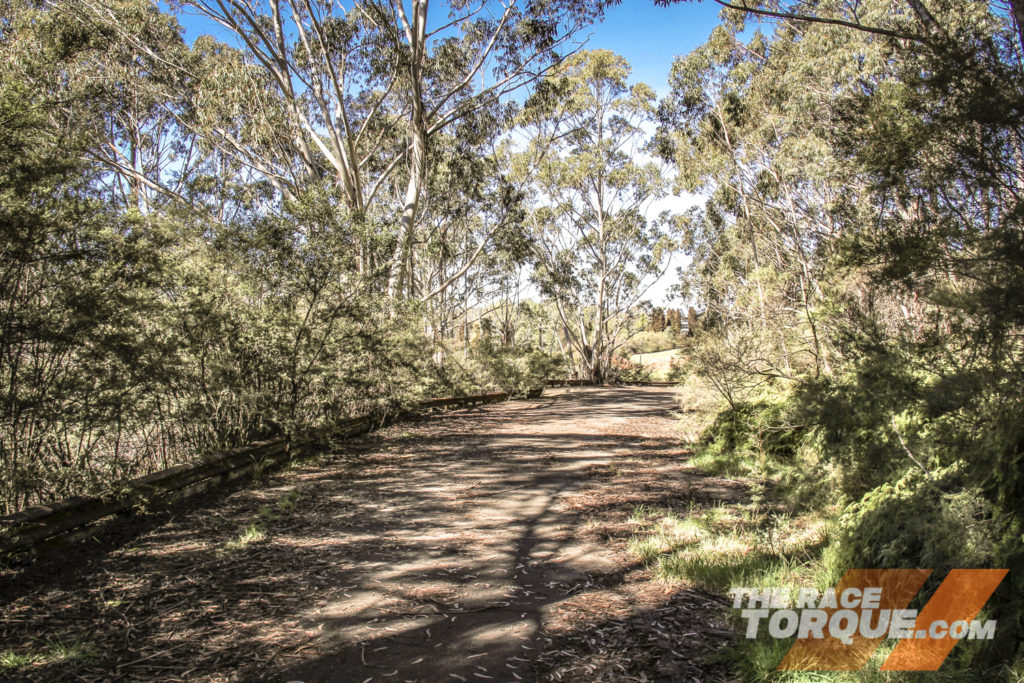
Summary & Further Reading
The area is clearly of significance to the local Aboriginal community, and equally, there is a band of motorsport enthusiasts who hold the race track dear.
Overall, it appears that there is no intention to tear up the remains of the track, but the above points in the plan would essentially mean that celebrating the sport in a formal capacity would not be allowed to take place on-site.
To provide feedback and read the full Gully Plan of Management, visit the Blue Mountains City Council Website, here. Submissions for feedback close on Monday, July 26th.
For more on Catalina Park and its motorsport history, visit the Friends of Catalina Park Raceway Facebook Group.
The page contains much spirited chat on the venue, and raises some pertinent points with regards to preserving the racing heritage of the site.
For our full photo gallery of what remains of Catalina Park, as taken in 2014, click here.



